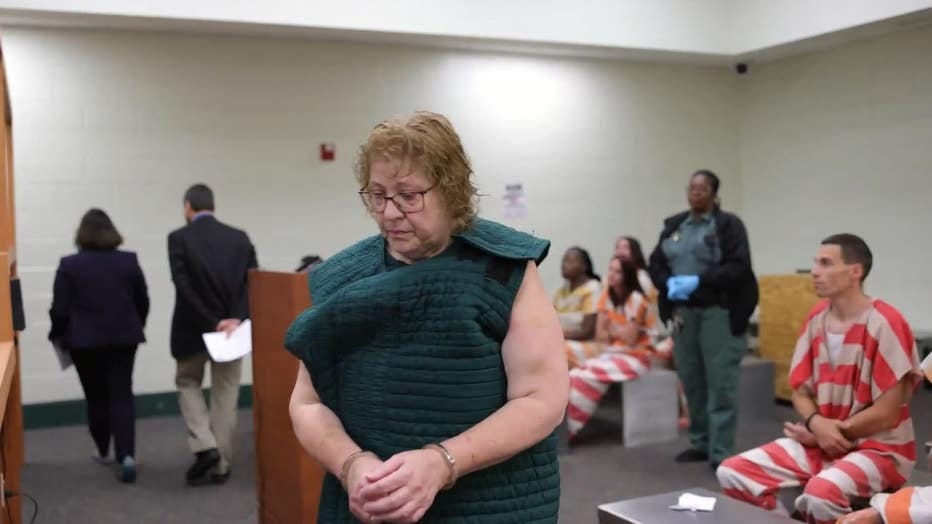GOOD MORNING SNAPSHOT STARS!

Black Educator of 50 Years Create Read in 40 Hours Phonics Program
“Over 85% of Black children attending our nation’s public schools don’t know how to read,” according to Berkeley, California teacher Rosa Higgs. But she insists that she has the best solution. She is the first Black woman to create a Phonics program that works. Her Phonics workbook series called Read in 40 is especially designed to help Black students learn to read at-or-above grade level.Rosa has over fifty years of experience as an educator, with twenty of those years applied to Special Education. She has taught hundreds of struggling students to read throughout her teaching career. Rosa Higgs has long identified that teaching Phonics is the method that has consistently worked, even when teaching children with dyslexia. Phonics is the time-tested and scientifically proven method of decoding words the way students had done in the 1960s when students in California led the nation in aptitude and performance.
“Everyone that I teach learns to read above grade level in forty hours or less, and that is why I chose the name,” says Rosa. “While other programs take over a year with moderate results, Read in 40 takes half a semester for a student’s reading aptitude to advance two or more levels. Direct instruction is also necessary for everybody, not only lower elementary school kids.”
As a third-generation native of Berkley, California, with fifty-plus years of experience, Rosa Higgs was teaching before “the reading wars” began. As an educator, Rosa Higgs remembers how the shift to the Whole Language policy started, the nuances of change, and why the policy shifts occurred to the detriment of our nation’s school children. She had seen first-hand how political interference and policy changes impacted her students. Rosa recalls, “In the 1960s, nearly all students in California were proficient in Reading. California students had the highest test scores in the country. Black, white, and Spanish-speaking students received Phonics instruction, and all learned how to read well. The rest of the country modeled the state of California’s curriculum.”
She continues, “Black children were taught Phonics in segregated schools and were reading well. Before the integration of our nation’s public schools, teachers in segregated schools taught black kids how to read, and we taught them using Phonics. Everyone learned Phonics in the state of California until the schools were integrated. Every student also had the option to learn a musical instrument until Ronald Reagan became governor. That’s when things went down. Republicans changed the curriculum, pushing the Whole Language Method, exclusively.”
The Whole Language approach stresses reading together and using pictures, syntax, and context to guess the meaning of words instead of learning how to decode words and sentences in the language the child already knows.
Dubuque County Habitat for Humanity Accepting Applications
Dubuque/Jackson Counties now accepting applications for homeownership in Dubuque County!
No murder charge for Susan Lorincz
OCALA, Fla. - The state attorney has officially filed criminal charges against Susan Lorincz after she allegedly shot and killed her neighbor Ajike "AJ" Owens following a reported dispute with her children.
The 58-year-old woman has been charged with one count of manslaughter with a firearm and one count of assault, State Attorney William Gladson said in a news release. She faces up to 30 years in prison after she allegedly fired a shot through her unopened front door following a reported dispute with Owens' children on June 2.
Lorincz remains at the Marion County Jail – she was granted a $154,000 bond, but told the judge she only had $1,700 to post – after she was arrested by the Marion County Sheriff's Office on charges of manslaughter with a firearm, culpable negligence, battery and assault, deputies said.
The state attorney said, however, one count of misdemeanor assault, one count of misdemeanor culpable negligence and one count of misdemeanor battery were not filed. The state attorney also did not file a charge for second degree murder, citing "insufficient evidence," despite a push from Owens' family to upgrade the original charges.
Why Susan Lorincz wasn't charged with second degree murder
Sworn testimony from Owens' children pointed to the absence of necessary elements of the charges not filed, the state attorney said. The skate Lorincz allegedly threw did not strike the child, a necessary element of the battery charge. Another child said he was not in fear, a required element of assault.
"Accordingly, the legal requirements to establish the crimes of battery and assault cannot be met and those charges cannot be filed," the state attorney said in the release. "The crime of misdemeanor culpable negligence was not filed because there is no evidence to establish that the defendant knew the child was with his mother when she shot the victim in this case."
The state attorney explained he simply followed the law in this case.
"My obligation as State Attorney is to follow the law in each case that I prosecute," Gladson said. "I did so in this case, and while some may not agree with that decision, I can assure you that the decision was thoughtful and made without consideration of any factors other than the specific facts of this terrible crime. Simply stated, my obligation is to follow the law.
"Understandably, emotions run high, particularly with senseless, violent crimes. However, I cannot allow any decision to be influenced by public sentiment, angry phone calls or further threats of violence, as I have received in this case. To allow that to happen would also be improper and a violation of my oath as a prosecutor and as a lawyer."
Keep reading with a 7-day free trial
Subscribe to The Creative Shift to keep reading this post and get 7 days of free access to the full post archives.






